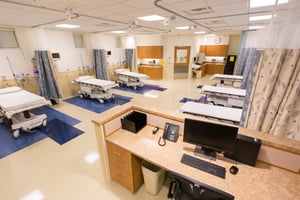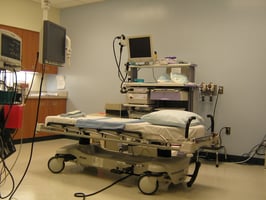Outpatient healthcare facility designers face unique challenges in balancing safety, efficiency,...
8 Essential Tips for Medical Equipment Planning in ASCs
Building an ambulatory healthcare facility requires careful planning, and one of the most critical early-stage considerations is medical equipment. Whether you’re working with an equipment planner, a vendor, or handling procurement yourself, timely decision-making is essential to avoid project delays and costly change orders.
Here are some key tips to streamline medical equipment planning:
1. Budget for Both Fixed and Movable Equipment, Considering the Total Cost of Ownership:
Medical equipment costs are substantial; account for both fixed (imaging, sterilizers, built-in lighting) and movable (tables, anesthesia machines, mobile C-arms), but also analyze the long-term financial implications including maintenance, consumables, and potential upgrades.
2. Plan Early to Ensure Proper Facility Design and Consider Technology Integration and Future Flexibility
Early equipment decisions are crucial for architectural, mechanical, and electrical planning (loads, gases, ventilation); proactively consider the integration of current and future technologies, ensuring infrastructure and adaptable designs to avoid early obsolescence.
3. Engage Equipment Specialists and Prioritize Infection Prevention
Before selecting equipment, meticulously map clinical workflows to inform needs and quantities; leverage expert planners or vendors to identify the right equipment for throughput, ensure regulatory compliance, coordinate logistics, provide critical checks for cost savings by preventing redundancies and optimizing layouts, and prioritize equipment features that support infection prevention.
4. Assure Compatibility with Building Systems
Some high-tech medical equipment requires dedicated systems, shielding, or reinforced structural support. Coordinating with the design team is essential to ensure everything is properly integrated before construction begins.
5. Verify Equipment Lead Times
Supply chain issues can impact delivery schedules. Some specialized medical equipment may take months to arrive, so ordering early is crucial. Work closely with vendors to schedule deliveries in sync with construction timelines.
6. Account for Staff Training and Testing
New medical equipment often requires staff training and calibration. Build time into your schedule for:
- Equipment installation and testing.
- Staff training on new technology.
- Adjustments before facility opening.
7. Document Decisions to Minimize Change Orders
Keep a detailed equipment schedule and track decisions in writing. Changes made late in the project can lead to:
- Costly change orders.
- Delays in construction completion.
- Regulatory and operational issues.
8. Expert Equipment Planners Provide Critical Checks and Balances for Significant Cost Savings
Experienced planners offer crucial oversight, identifying redundancies, optimizing quantities and layouts, negotiating better pricing, and preventing costly late-stage errors, potentially saving millions in equipment and construction expenses.
Medical equipment planning is more than just procurement—it’s about ensuring smooth integration into your facility’s design. The earlier you make decisions, the better your chances of avoiding unexpected costs and delays. Whether you’re building a new ASC or upgrading an existing facility, a proactive approach to medical equipment planning will set your project up for success.



